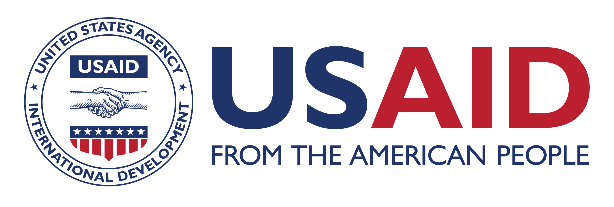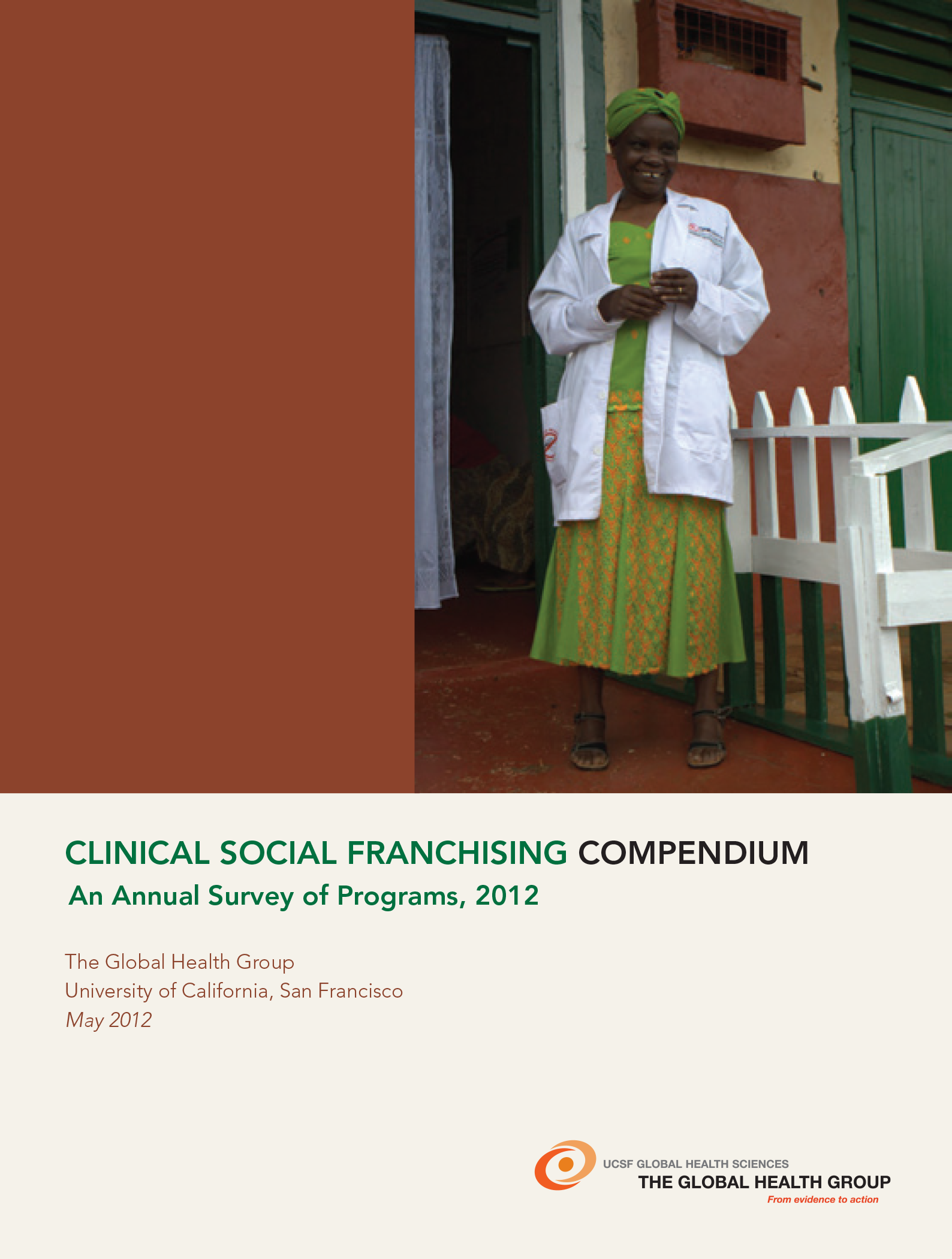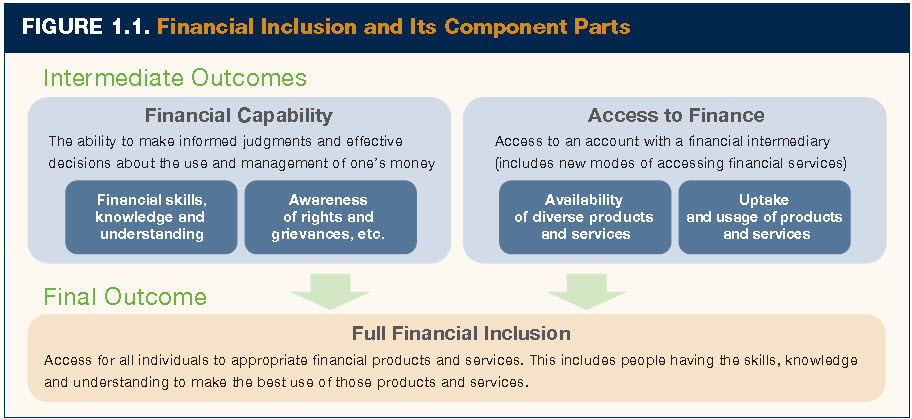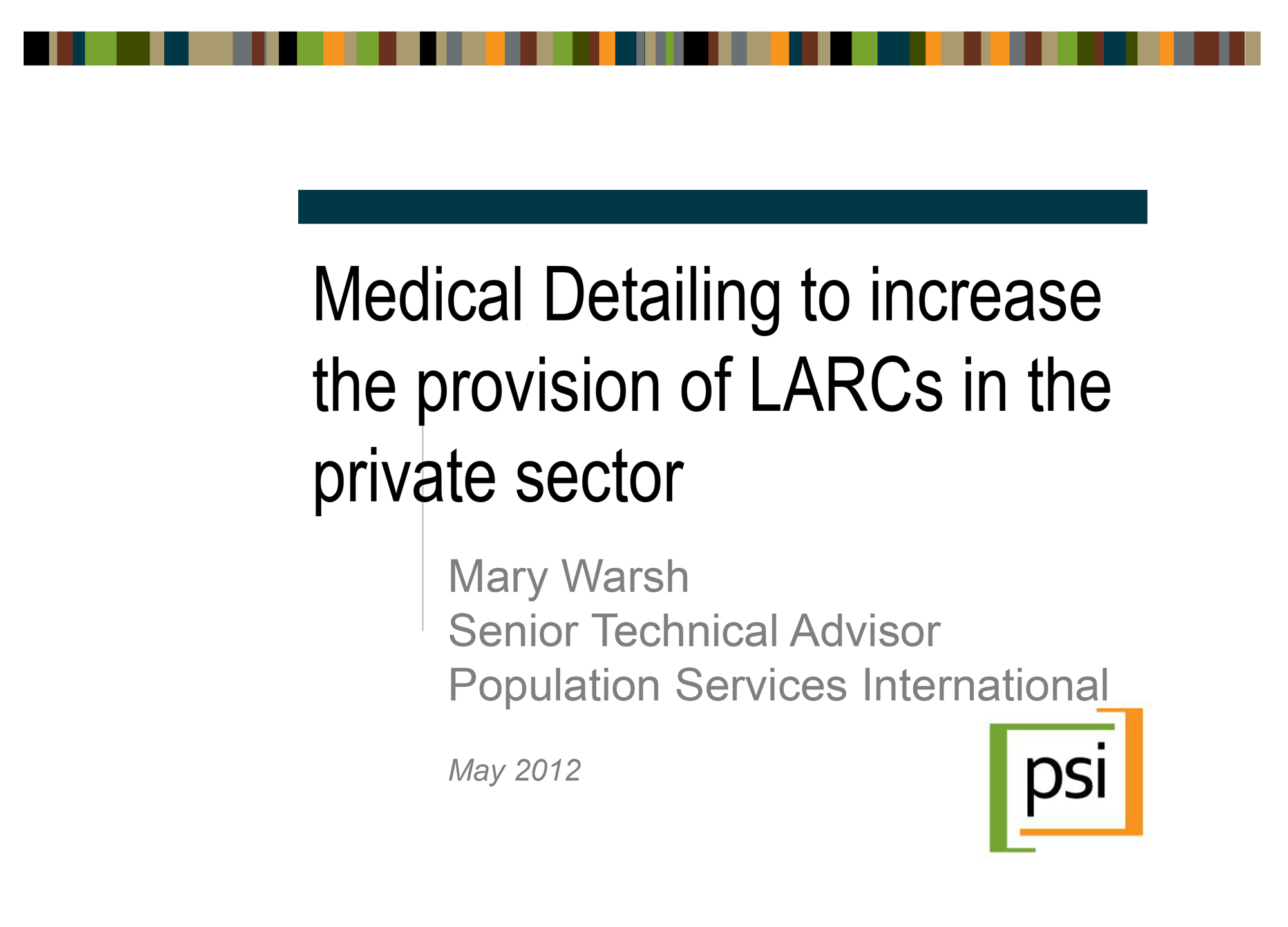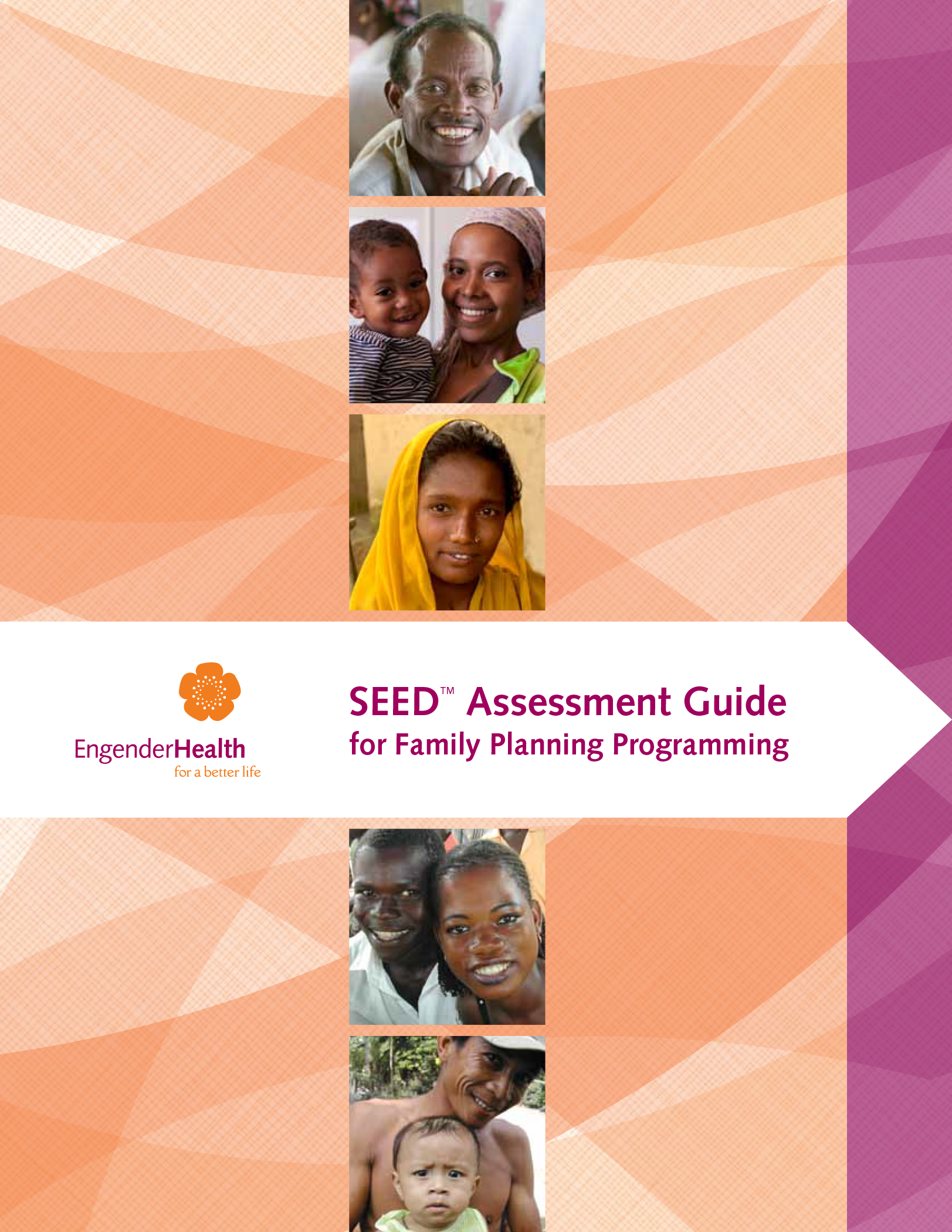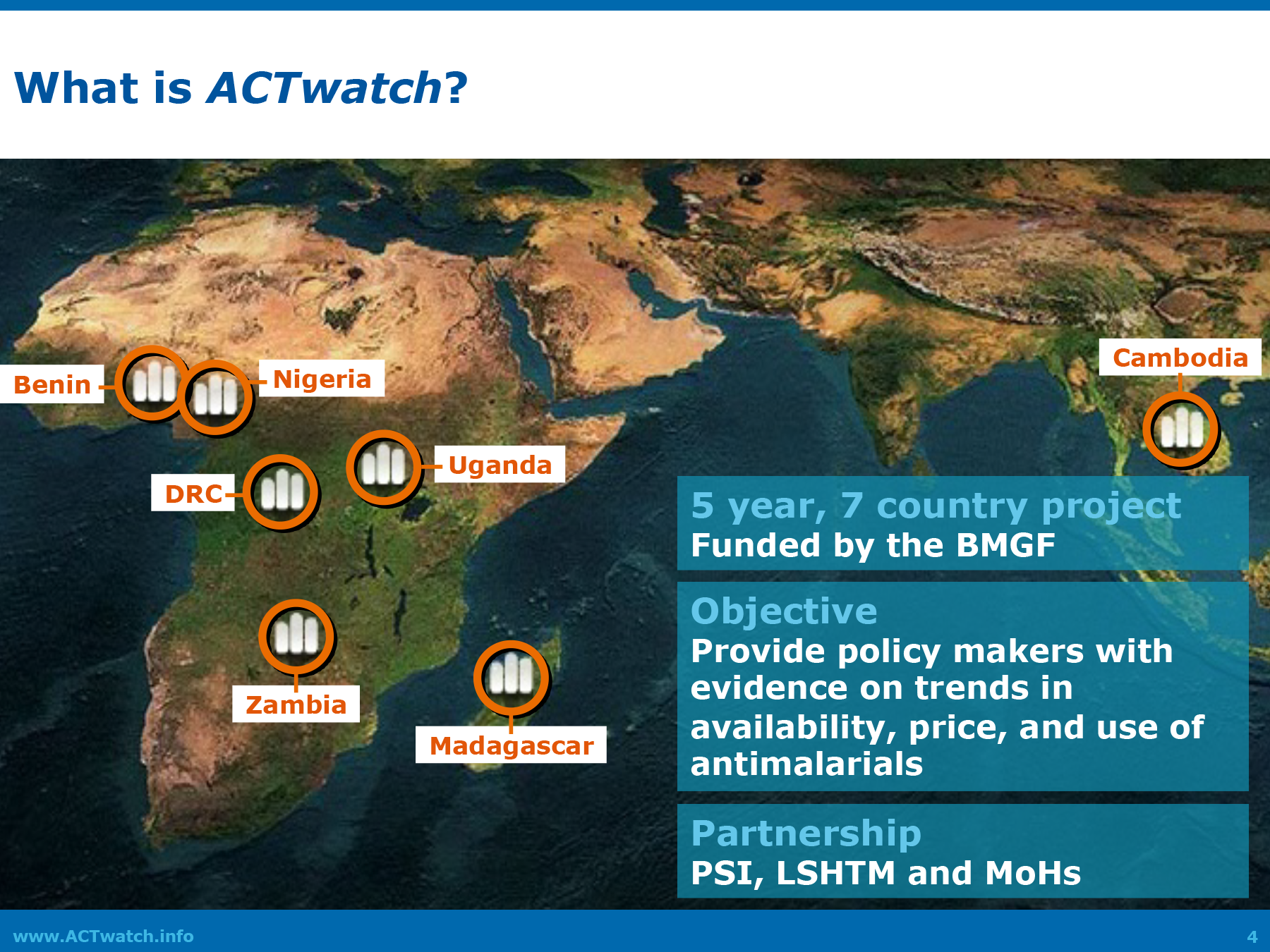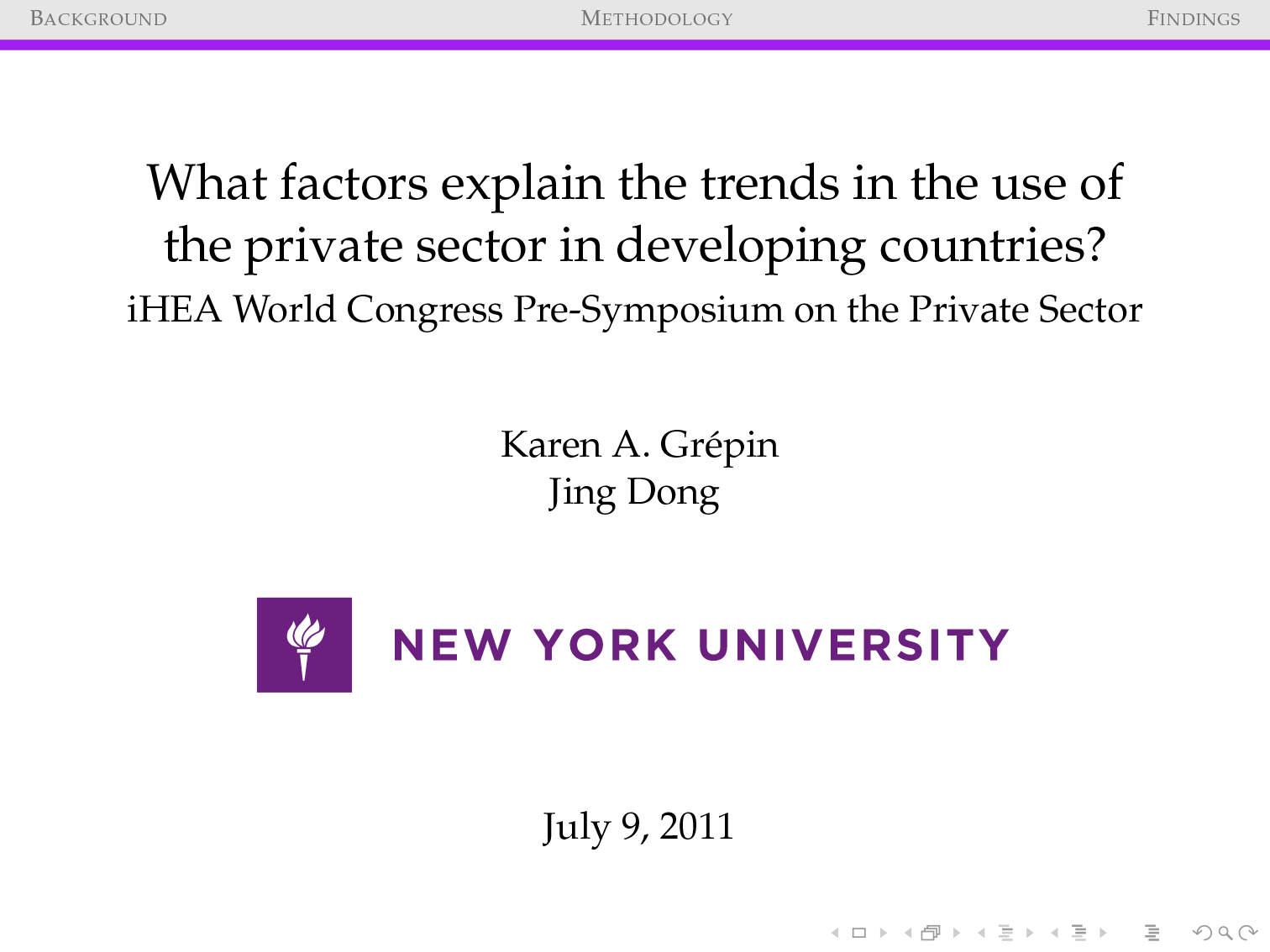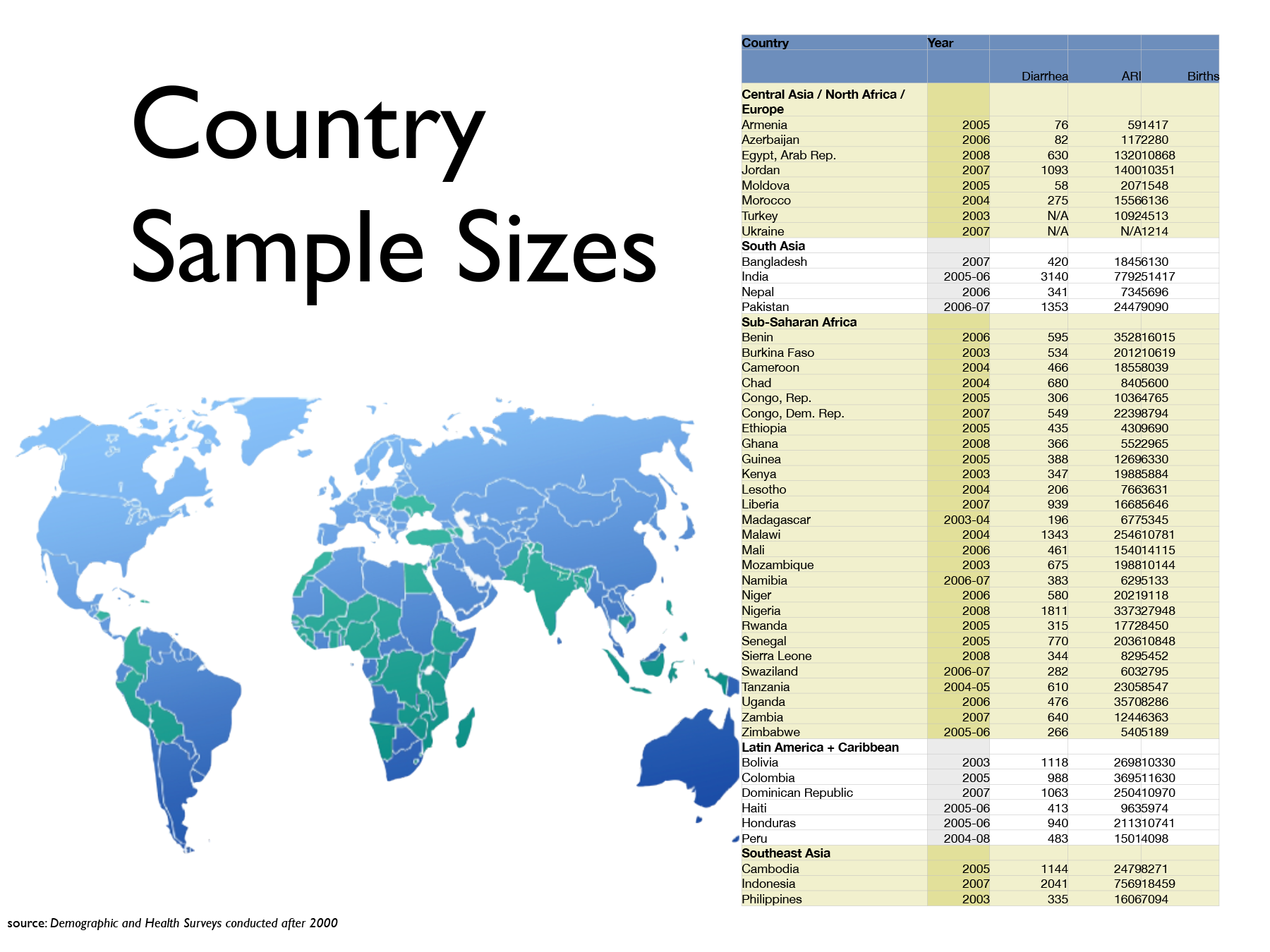
Resource Library
2012 Clinical Social Franchising Compendium
This compendium contains profiles that describe innovations in financing, partnerships, quality assurance systems and involvement of community health workers. Increased focus on documenting program results through operational research is also evident this year as 18 franchises report conducting research activities on topics including network sustainability, quality of care, provider drivers and barriers to IUD insertion, and voucher program effectiveness. Include summary tables, graphs, and a map of franchise growth around the world.
Resource Type : Tool
Country :
Year : 2012-05-01T00:00:00
Language : English
Project : SHOPS

Resource Library
Video Transcript – Contracting Out Health Services: Lessons for Service Delivery Organizations
This document is a transcript of the SHOPS video interview with Nick Corby of Marie Stopes International, Contracting Out Health Services: Lessons for Service Delivery Organizations. Speaking from a service delivery organization perspective, Corby discusses best practices and key lessons. He highlights four advantages of contracting out: improving health services coverage, impact, quality, and cost-effectiveness. He also offers advice to service delivery organizations on how to successfully work with the public sector.
Resource Type : Other
Country :
Year : 2012-07-12T00:00:00
Language : English
Project : SHOPS

Resource Library
Bridging the Gap: The Business Case for Financial Capability
This report discusses the lack of financial literacy among the large numbers of people who have access to financing. It is estimated that 500-800 million of the world's poor now have access to finance; however, only 110-130 million of that number have had any sort of financial capability training. In many cases, financial institutions that serve low-income customers view financial education as a cost center rather than a strategic investment. The report analyzes different financial institutions' approaches to financial education, and the need for new models that reach more people, are affordable and scalable, and are tailored toward the evolving models of access to finance now available to low-income customers, such as mobile banking. It also reviews the risks of having large numbers of people who are able to access financing but who do not have a strong understanding of the products they are purchasing. The report is intended for program managers and people interested in low-income financing and microfinance. Read an executive summary of the report.
Resource Type : Report
Country :
Year : 2012-05-25T00:00:00
Language : English
Project : SHOPS

Resource Library
Medical Detailing to Increase the Provision of LARCs in the Private Sector
Mary Warsh discusses how Population Services International has used medical detailing to combat negative provider attitudes toward the provision of long-acting and reversible contraceptives (LARCs). Ms. Warsh is currently a senior technical advisor for reproductive health based at Population Services Internatioanl headquarters in Washington, DC. Download a PDF of the presentation by clicking on the download button, or view a recording of the presentation.
Resource Type : Presentation
Country :
Year : 2012-05-10T00:00:00
Language : English
Project : SHOPS

Resource Library
Bridging the Gap: The Business Case for Financial Capability Brief
This brief summarizes the findings from a report on the lack of financial literacy among the large numbers of people who have access to financing. It is estimated that 500-800 million of the world's poor now have access to finance; however, only 110-130 million of that number have had any sort of financial capability training. In many cases, financial institutions that serve low-income customers view financial education as a cost center rather than a strategic investment. The brief discusses different financial institutions' approaches to financial education, and the need for new models that reach more people, are affordable and scalable, and are tailored toward the evolving models of access to finance now available to low-income customers, such as mobile banking. It also reviews the risks of having large numbers of people who are able to access financing but who do not have a strong understanding of the products they are purchasing. This brief is intended for program managers and people interested in low-income financing and microfinance. Read the full report.
Resource Type : Brief
Country :
Year : 2012-04-12T00:00:00
Language : English
Project : SHOPS

Resource Library
Health Policy Toolkit
The Health Policy Toolkit is a web-based platform that offers health policy stakeholders and practitioners online access to a growing collection of information about policies and practices that can help enhance the contribution of the private sector to important health goals in developing countries. The Toolkit includes links to key policy resources in a variety of formats.
Resource Type : Tool
Country :
Year : 2012-03-02T00:00:00
Language :
Project : SHOPS

Resource Library
SEED Assessment Guide for Family Planning Programming
The Supply–Enabling Environment–Demand (SEED) Assessment Guide for Family Planning Programming is a tool for identifying strengths and weaknesses in national FP programs through the identification of programmatic gaps that require intervention or more in-depth assessment through other methodologies. The Assessment Guide is primarily written for high- or mid-level FP program managers in ministries of health, donor agencies, or technical organizations, though others working in the area of FP could also find it useful.
Resource Type : Tool
Country :
Year : 2012-02-03T00:00:00
Language : English
Project : SHOPS

Resource Library
The Private Sector Role in the Supply of Antimalarial Drugs: Evidence from ACTwatch & Implications for Initiatives to Improve ACT Access
Presentation by Kara Hanson from "Session 1C: Recent Evidence and Policy Implications" at the International Health Economics Association bi-annual meeting in Toronto, on July 09, 2011 in a pre-Congress symposium.
Resource Type : Presentation
Country :
Year : 2011-07-19T00:00:00
Language : English
Project : SHOPS

Resource Library
What factors explain the trends in the use of the private sector in developing countries?
Presentation by Karen A. Grepin and Jing Dong for Session 1A: "Measuing the Private Sector"at the International Health Economics Association bi-annual meeting in Toronto, on July 09, 2011 in a pre-Congress symposium.
Resource Type : Presentation
Country :
Year : 2011-07-15T00:00:00
Language : English
Project : SHOPS

Resource Library
Health Care Utilization Around the World
Presentation by Dominic Montagu and Adam Visconi from Session 1A: "Measuring the Private Sector" at the International Health Economics Association bi-annual meeting in Toronto, on July 9, 2011 in a pre-Congress symposium. This presentation examines the results of analysis of data from Demographic and Health Surveys (DHS) conducted since 2000. The source of healthcare services reported is an average of respondentsʼ reported health seeking for children under 5 in the three months prior to the DHS survey
Resource Type : Presentation
Country :
Year : 2011-07-15T00:00:00
Language : English
Project : SHOPS
Pagination
- Previous page
- Page 5
- Next page

